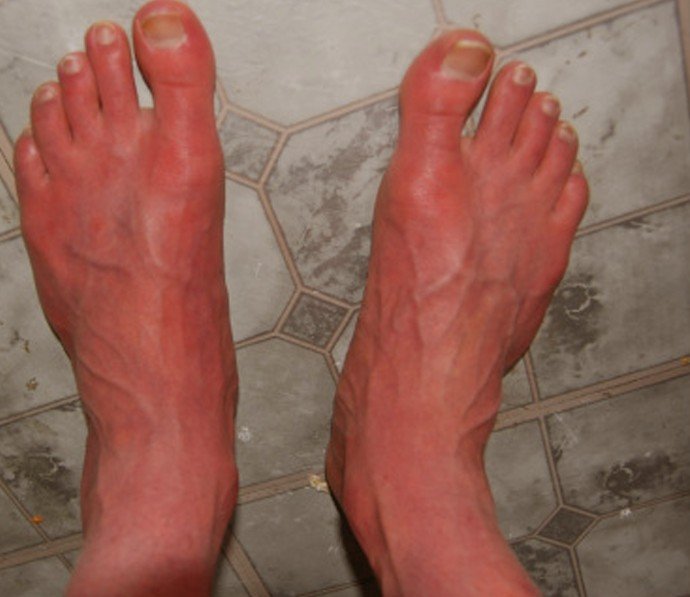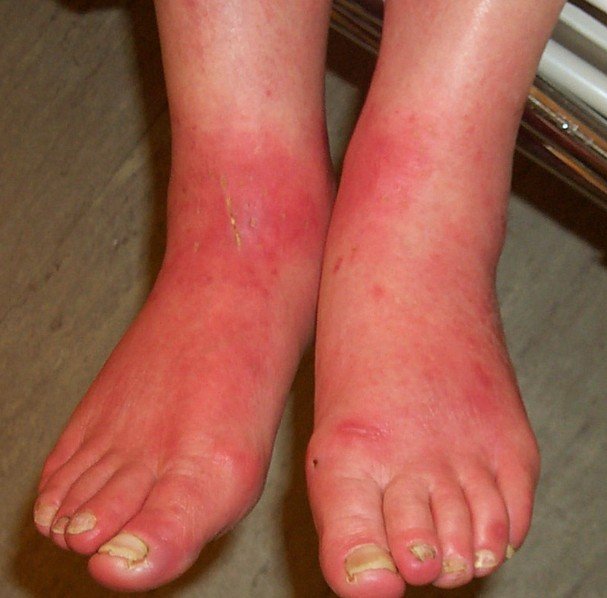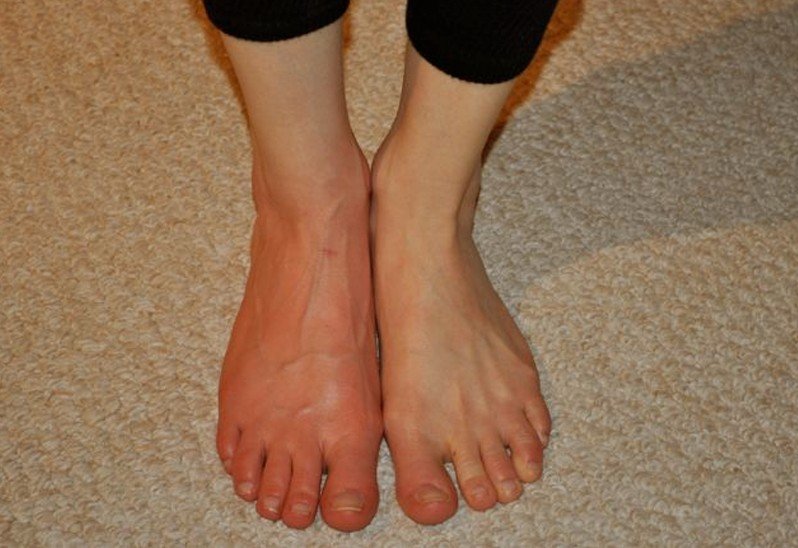Erythromelalgia
What is Erythromelalgia?
This is a rare neurovascular peripheral pain disorder that affects your skin. It will cause the skin on your feet and hands to become red and have painful burning sensation. Early onset erythromelalgia can develop before a person turns twenty-five and late onset erythromelalgia will usually develop between the ages of forty and sixty. Approximately sixty percent of the people worldwide are affected by late onset erythromelalgia. It is a disorder that can cause a person to become debilitated if it is severe enough. It can cause a person to become unable to function in a workplace, have sudden depression, lack of mobility, and more. It is also referred to as acromelalgia, Mitchell’s disease, or burning feet syndrome.
Types of Erythromelalgia
Erythromelalgia can be divided into two types which are:
Primary erythromelalgia
This results from a genetic mutation and the symptoms associated with this type are usually triggered by changes in the temperatures, over-exertion, heat, spicy foods, exercise, alcohol.
Secondary erythromelalgia
This results from certain autoimmune disorders like mushroom poisoning, mercury poisoning, Hypercholesterolemia, and essential thrombocytosis.
Erythromelalgia Symptoms
The symptoms of erythromelalgia can vary from patient to patient. There are some that will only have tingling sensations and slight itching that will only last for several minutes. Others are not so lucky and will have severe skin discoloration and pain that is intense and can last for weeks, even months, at a time. The symptoms are typically worse when your extremities, which are your hands and feet, are bound by gloves and shoes and causes friction on your hands and feet or they are exposed to hot temperatures. Although it is rare it is possible for you to have erythromelalgia symptoms of redness and burning to affect other parts of your body, especially the ears and scalp. When a person has erythromelalgia it can affect one or both side of your body.
Other symptoms or signs can include:
- Having a continual burning while other are just having trouble with flare-ups
- When having a flare-up it can last only minutes or even days. They usually occur late in the day and will continue all night.
- Limbs that are swollen
- Genetic Blood Vessel Condition
- Pain and inflammation in different parts of your body.
Causes of Erythromelalgia
Although erythromelalgia is usually caused by extreme heat or friction many times there is no identifiable cause. Most of the patients who have idiopathic erythromelalgia are over the age of sixty, which means there is no known cause. When people who are younger than sixty years of age may have the symptoms of erythromelalgia because of an underlying autoimmune disorder like diabetes or lupus or they could have a genetic blood vessel disease. Erythromelalgia has also been correlated with neurological conditions like multiple sclerosis. Although it could happen it is rare that it can run in families and have a parent be a carrier of a specific gene mutation and passing it down to a child.
Some of the possible causes can include:
- Heavy metal poisoning
- Fungal or other infections
- Age
- Neurological problems
- Being deficient in nutrients like Pantothenic Acid
- Excessive sweating, especially on your feet.
- Wearing socks or shoes that are too tight for too long period of time
Diagnosis
If you are noticing that your hands and/or feet appear red and you are having painful burning sensations you should see your dermatologist and not your physician. Many times your dermatologist may be able to give a diagnosis that is based on the physical characteristics of your extremities or by the symptoms that you tell your dermatologist. If you are not experiencing erythromelalgia or a flare up at the time of your appointment the dermatologist may try to induce an episode of erythromelalgia by soaking a foot or hand in hot water. The dermatologist may also order blood tests, imaging scans, and neurological exams to look for signs of any underlying condition. To get the proper diagnosis it can take several months and you may have to consult many different specialists to find out what the problem is.
Erythromelalgia Treatment
A person who has idiopathic erythromelalgia with mild symptoms may not need any medical treatment. When seeing your dermatologist for this medical condition they may suggest that you avoid wearing shoes whenever possible, on hot days stay inside, and when you have flare-ups you can try to put your hands and feet in cool water. If it is a severe case your dermatologist may prescribe a topical cream to apply to your hands and feet to soothe the burning sensation. To help reduce the symptoms you could take over-the-counter anti-inflammatory medications. You should also stay indoors on hot days, wear shoes that are not too tight and when at home go barefoot or wear loose fitting sandals, and do not do intense workouts for a long period of time.
Surgery
If all the above treatments do not give you the relief it should, your dermatologist may suggest surgery. This surgical procedure is called a sympathectomy and involves cutting the nerve endings that transmits the pain signals from your hands and feet. There are some serious risks associated with this surgery but generally it is considered to be more beneficial to the patient whose quality of life is severely affected from erythromelalgia.
Natural treatment
One way to help cure erythromelalgia naturally is to eat a lot of foods that are rich in vitamin B like:
- Whole grains
- Brown rice
- Peanuts
- Dairy products that include milk and butter
- Various green and yellow vegetables
These foods can also help to boost your immune system along with giving you relief from the symptoms of erythromelalgia.




